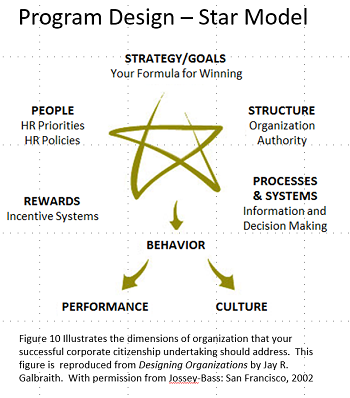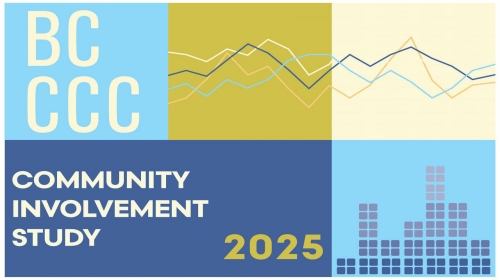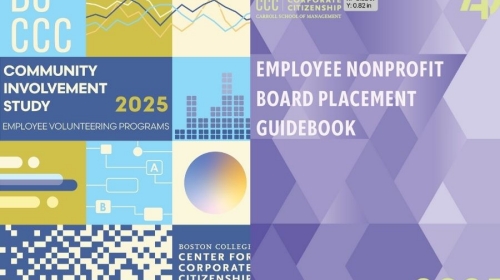RESEARCH BRIEF - Researchers investigated how ESG activities help or hurt financial performance, using nine years of data from over 1,200 global companies.
Corporate Citizenship and Culture

How does your corporate citizenship program support your company’s purpose, vision, strategy, and ultimately culture?
Your company has a core purpose, and so does your corporate citizenship program. Purpose is the motivation for all your company does; vision is a vivid, easily communicated image for how the world will be different if your company is successful in achieving its objectives; and strategy is the plan of action for how you will compete in the market to achieve this vision. Purpose is the reason you’re undertaking your strategy, and usually doesn’t change. Strategy changes as customers, consumers, and markets evolve. This moment in time certainly demands a review of strategy. So how does culture contribute to business success?
One of the most critical roles of the corporate citizenship leader is to reinforce culture, which is valuable across all of your stakeholders—albeit in different ways. A fellow employee might say, “I love coming to work because my company is making a real impact.” And while it’s not likely a Wall Street investor would praise your company’s robust volunteer program, they may, however, note your low staff turnover and exceptional people management—which are indicative of a strong and positive culture. Can your corporate citizenship program contribute to that strength? Now more than ever, these questions are important for not only great corporate citizenship, but also for your business success.
In our forthcoming Profile of the Professionals 2020 report, respondents working in corporate citizenship roles note that company culture contributes most to the success of their work. Creating a positive culture can’t happen in isolation. Like your financial performance, culture is an outcome. It is derived, observed, emulated, and carried by all of your employees based on many decisions that are made every day. If business performance is a result of what we decide to do, culture is the result of how we decide to do it. Taken together, both our performance and our culture speak to who we are as an organization.
But, in our current moment, how do you establish culture when you and your colleagues are physically distanced from each other? Industry trends show us that remote work will continue in many companies for some time and corporate citizenship professionals will need to shift how they engage employees.
It’s time to review your star model: A framework for setting up and organizing your corporate citizenship program

Our research finds that CSR professionals are most often part of small teams, and nearly half have no direct reports. You may be one of the fortunate few with a large team supporting the work. If so, congratulations—and condolences. You have a lot of work to do to get everyone on the same page. Even with a lean team, you can drive change and generate important results as long as you think carefully about how you use your resources and influence to mobilize people.
In his book Designing Effective Organizations, Jay. R. Galbraith created The Star Model(TM) to visualize how this works. For Galbraith, a strategy is basically a company’s formula for success, encompassing the organization’s mission as well as its business goals. The Galbraith Star Model highlights the multiple dimensions of successful strategy implementation. Galbraith’s model reminds us that strategy is not only about formal structures, but also getting the right people involved with the right incentives and processes to support the desired outcomes. You can develop a Star Model for every program you have to ensure that you have a comprehensive plan that will yield the performance (what we have achieved) and culture (how you have achieved it) you are seeking. Our systems (and our thinking) are what together create not only our business results but also our culture.
The right strategy
Determining the strategy that differentiates your company and unlocks maximum business and social value is a process that requires inputs from stakeholders, benchmarking, and perhaps some human-centered design.
To the right people
Getting the right people in your company on board is essential for the success of your strategy implementation. To start this process, you need to work out what your professional network is across the company, where the main corporate citizenship action will take place, and who might be best positioned to help you take action.
Here are the roles you should be considering when you’re creating your internal network:
- The people you want on your teams to do the work.
- Ambassadors for specific campaigns, such as corporate giving or green team initiatives. These people will help you spread the word.
- Project sponsors who have the authority or influence to deploy resources, and who care enough about your objectives to use their financial or social capital to help you achieve them.
Once you’ve identified your people, how do you go about recruiting them? The best way is to invite them to participate. Conversely, when someone you have not identified raises their hand, you can consider whether they’re capable of doing what you need. If they are, that’s great—but if not, look at this as a professional development opportunity for the individual. Also, make sure you are working with your leadership and development teams to ensure anyone you recruit is acknowledged as a good organizational citizen. Gaining recognition for enthusiasm and willingness to take on additional responsibility is a powerful motivator for many employees.
The right structure
If you’re a department of three, for instance, you can’t realistically expect only one person to be responsible for the execution of a huge project for a major company. Even larger departments may not have the skills needed, for example, to run a cost-benefit analysis on the program. Therefore, thinking closely about the networks of people you recruit, and how you deploy them in a structured way, is vital. Many companies, have created formal as well as informal governance structures around their corporate citizenship programs.
For example, General Motors has integrated corporate responsibility into its board structure, including ESG- and climate-related oversight. GM's sustainability team annually reports on ESG to the board's governance & responsibility committee with support and feedback from internal and external advisory groups and key functional business units. This cohesive, consultative structure creates accountability and incorporates complementary views and perspectives.
The right processes
How do you get your work done? Processes cover every element of your corporate citizenship program implementation, including the steps you’re taking to recruit people to your team, how they’re going to carry out the tasks, how decisions will be made, how you’re going to communicate progress, and what methods you’ll use to document those processes so others can replicate them.
You may be wondering what I mean by processes. Think of them as the directions section of a recipe. The same ingredients can yield very different results, based on the processes used to cook them.
Communication processes are obviously critical, but there are also execution processes. If ambassadors from all over your company have offered to be part of your initiative, not all of them will be capable of executing your plan without support. Many have probably never done anything like this before—and may still be adapting to remote work. So you’ll need to provide them with step-by-step directions for what you want them to do, and support them while they execute it. Your process might include a timeline and sequence of tasks. If you’re instructing them to send an email or set up a webcast for a certain group of people, for example, include templates for them to use, set them up and/or train them on the software they’ll need, or introduce them to the person who can.
The right metrics and incentives
The people you’ve organized to implement your processes are more likely to stay engaged with your initiative if it’s clear to them how you will measure and reward success. Establishing agreed upon metrics is vital in that they communicate progress, so everyone can understand what’s been achieved. There’s nothing more demotivating than working hard on a project only to be left in the dark about what the end results have been, or even how it’s progressing as time goes by.
Incentives for performance are, of course, tricky when you’re managing people through influence (rather than by direct control) as you can’t necessarily give them financial rewards. There are other incentives you can offer, however. One is a job well done; intrinsic motivations such as satisfaction can be a powerful incentive to continue, and people like to continue tasks in which they experience success. Public recognition for achieving milestones can also be a powerful motivator, especially when it’s conferred by your CEO or other key players in your c-suite.
Related Content
RESEARCH BRIEF - Researchers analyzed 4 US energy exchange-traded funds (ETFs) over 15 years, including 2 dirty energy funds tracking fossil fuel companies and 2 clean energy funds tracking renewable energy companies.
RESEARCH BRIEF - Researchers conducted a survey, which measured perceptions of CSR and ethical leadership within the manufacturing and service industries.
WEBINAR: This webinar explores how corporate giving will be reshaped by the One Big Beautiful Bill. Hear directly from corporate citizenship leaders as they share innovative, real-world strategies that deliver impact for communities and results for business.
This study explores shifting trends in employee volunteering, corporate giving, and other means of corporate community involvement.
This guidebook offers insights on placing employees in nonprofit board service roles.
This Member Meetup focused on strategies for building compelling business cases for corporate social responsibility initiatives. Two organizations shared their approaches to securing leadership buy-in and funding for CSR programs by anchoring requests in business strategy, quantifying value, and crafting persuasive narratives.
RESEARCH BRIEF - To examine whether CSR Activities affect Long-term Stock Returns, researchers studied 6971 observations of common stock of Japanese firms operating globally, along with accounting data and ownership data.








